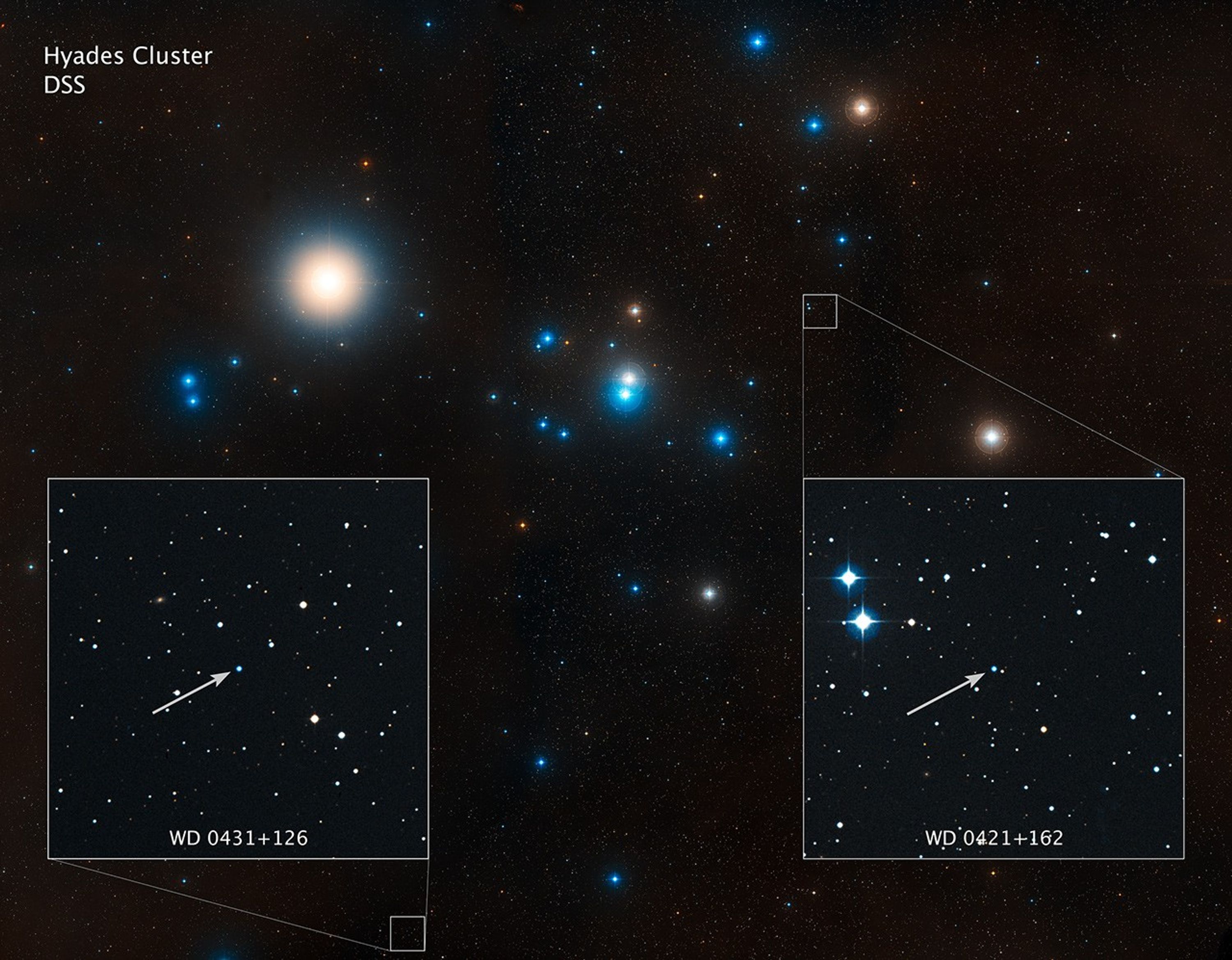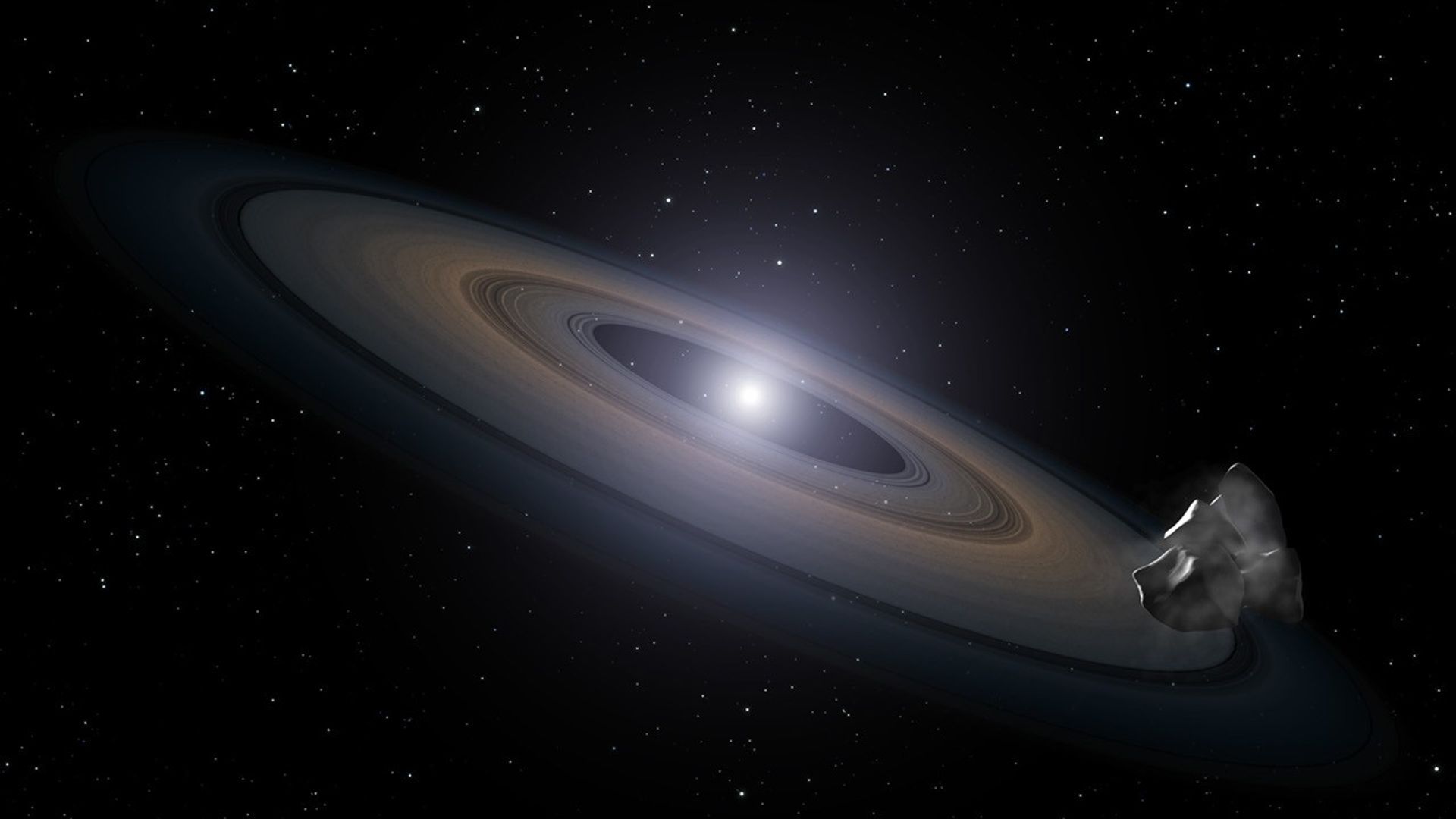1 min read
Artist’s Impression of a White Dwarf ‘Polluted’ with Planet Debris

This is an artist's impression of a burned-out star, called a white dwarf, accreting rocky debris left behind by the star's surviving planetary system. At lower right, an asteroid can be seen falling toward a Saturn-like disk of dust that is encircling the dead star. Infalling asteroids pollute the white dwarf's atmosphere with silicon. This element is not found in white dwarfs, but it is part of a rocky planet's composition. This "planetary chemistry" implies that the white dwarf's progenitor star had planets composed of Earth-like material, and that such planets are common around stars. The telltale chemical fingerprints were identified by the Hubble Space Telescope's Cosmic Origins Spectrograph (COS). The dead star is one of two observed by Hubble in the Hyades star cluster, 150 light-years from Earth.
About the Data
- Data DescriptionData DescriptionProposal: A description of the observations, their scientific justification, and the links to the data available in the science archive.
Science Team: The astronomers who planned the observations and analyzed the data. "PI" refers to the Principal Investigator.The image was created from Hubble data from proposal 12169: B. Gaensicke (University of Warwick), D. Koester (Universitat Kiel), J. Farihi (Institute of Astronomy, University of Cambridge), and J. Girven (University of Warwick).
- Release DateMay 9, 2013
- Science ReleaseHubble Finds Dead Stars ‘Polluted’ with Planet Debris
- Credit
Related Images & Videos

Digitized Sky Survey Image of White Dwarf Stars in Hyades Cluster
The Hyades is the nearest open star cluster to our solar system, at 150 light-years from Earth. This image is a color composite of red- and blue-filter observations from the ground-based Digitized Sky Survey. The Hubble Space Telescope's Cosmic Origins Spectrograph was used to...

Planet Debris Falling onto a White Dwarf
This video animation shows a burned-out star, called a white dwarf, accreting rocky debris left behind by the star's surviving planetary system. An asteroid can be seen falling toward a Saturn-like disk of dust that is encircling the dead star. The asteroid is torn apart by the...
Share
Details
Last Updated
Aug 17, 2025
Contact
Media
Claire Andreoli
NASA’s Goddard Space Flight Center
Greenbelt, Maryland
claire.andreoli@nasa.gov




























